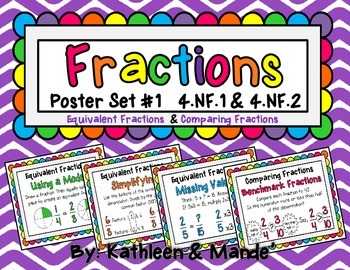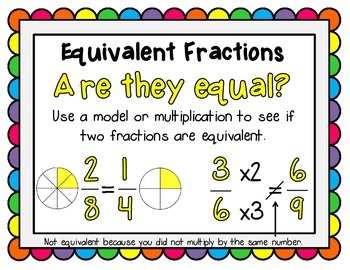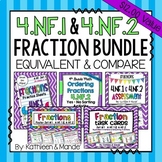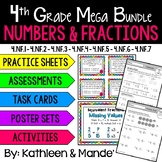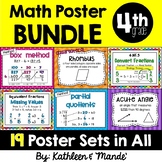4.NF.1 & 4.NF.2 Poster Set (Equivalent Fractions & Comparing Fractions)
- PDF
What educators are saying
Also included in
- This bundle has everything you need to teach 4.NF.1 and 4.NF.2: Equivalent Fractions and Comparing Fractions. This includes 24 practice sheets, an assessment, 10 learning posters, sorting activity, and 32 task cards! By purchasing the bundle, you can save 15%! WOW! Click each link below to see eachPrice $10.20Original Price $12.00Save $1.80
- Teaching fractions? Grab this MEGA bundle with everything you need to teach all of your 4.NF standards. Each standard below can be purchased as an individual bundle (click link) at a 15% savings. When you purchase this MEGA bundle you save even more....20%!What's included? These 23 awesome resourcesPrice $42.00Original Price $53.00Save $11.00
- Get all of our best selling poster sets in one download! This product includes 19 poster sets in all....That's over 250 posters! WOW! Save over 10% when purchasing this bundle! Poster Sets are included for the following standards:**Numbers and Base Ten Operations**4.NBT.1-2: Place Value4.NBT.3: RounPrice $35.00Original Price $40.50Save $5.50
Description
These Common Core aligned learning posters are a great way to show students the different methods to compare fractions and identify equivalent fractions. They will make an excellent visual reference for your students. Aligned to 4.NF.1, 4.NF.2, and 3.NF.3.
- - - - - - - - - - - - - - - - - - - - - - - - - - - - - - - - - - - - - - - - - - - - - - - - - - - - - - - - - - - - - - - - - - -
This resource can be used along with our other 4.NF.1 & 4.NF.2 resources:
4.NF.1 & 4.NF.2 Practice Sheets: Equivalent/Comparing Fractions
4.NF.1 & 4.NF.2 Assessment: Equivalent/Comparing Fractions
4.NF.1 & 4.NF.2 Task Cards: Equivalent/Comparing Fractions
{FREEBIE} 4.NF.2 Sorting Activity: Ordering Fractions
…....or purchase one of our bundles and SAVE $$$!
Save 10%....4th Grade Math Poster Set Bundle!
Save 15%....4.NF.1 & 4.NF.2 Bundle!
Save 20%...4.NF **MEGA** Bundle - All Fraction Standards!
- - - - - - - - - - - - - - - - - - - - - - - - - - - - - - - - - - - - - - - - - - - - - - - - - - - - - - - - - - - - - - - - - - -
This 12 poster set includes the following:
- 1 Fraction Poster (Definition with different representation of fraction models)
- 6 Equivalent Fraction Posters
- Title Poster
- Using Models
- Using Multiplication
- Finding Missing Values
- Simplifying
- Are they equal?
- 5 Comparing Fractions Posters
- Title Poster
- Using Benchmark Fractions
- Using Models
- Common Denominators
- Cross Multiplying
These can be used full size as posters, or these can be printed smaller (print 2 or 4 to a page) to be used in your interactive math notebook or in flip books.
We hope you and your students enjoy these wonderful learning posters!
Teaching Together,
Kathleen and Mande'

